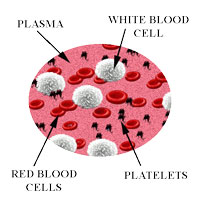Platelet-Rich Plasma: Does It Work? *
 Platelet -rich plasma (PRP) is currently used as an alternative treatment method for several common orthopaedic-related sports medicine conditions. According to a new study in the October issue of the Journal of the American Academy of Orthopaedic Surgeons(JAAOS), early outcomes of PRP appear promising; however, larger clinical studies are still needed to determine the benefits of its use.
Platelet -rich plasma (PRP) is currently used as an alternative treatment method for several common orthopaedic-related sports medicine conditions. According to a new study in the October issue of the Journal of the American Academy of Orthopaedic Surgeons(JAAOS), early outcomes of PRP appear promising; however, larger clinical studies are still needed to determine the benefits of its use.
“Some believe that PRP may catalyze the body’s repair mechanisms at areas of injury, improve healing and shorten recovery time,” said study co-author Michael Hall, MD, a senior orthopaedic surgery resident at the NYU Hospital for Joint Diseases in New York. “However, there currently is minimal evidence of this clinically and more research must be performed.”
A Simple Process and Procedure
- Obtaining and utilizing PRP is a relatively simple process: a patient’s own blood is placed into a centrifuge that rotates at high speed.
- This procedure separates the red blood cells from the platelets, which are blood cells that release growth factors that help the body heal itself.
- Next, the physician takes the platelet-rich portion of this blood (PRP) and injects it directly into the patient’s injured area and the treatment is complete.
* Source – American Academy of Orthopaedic Surgeons – read entire article.
Listen to Dr. Emile P. Wakim talk about Platelet-Rich Plasma (PRP).
More Platelet-rich plasma (PRP) Resources:
Platelet-Rich Plasma: Does It Work?
Use Of Platelet-Rich Plasma In Orthopaedics
Platelet-rich plasma (PRP) Used Primarily for Chronic Conditions
Should I Have platelet-rich plasma (PRP) Treatment?
